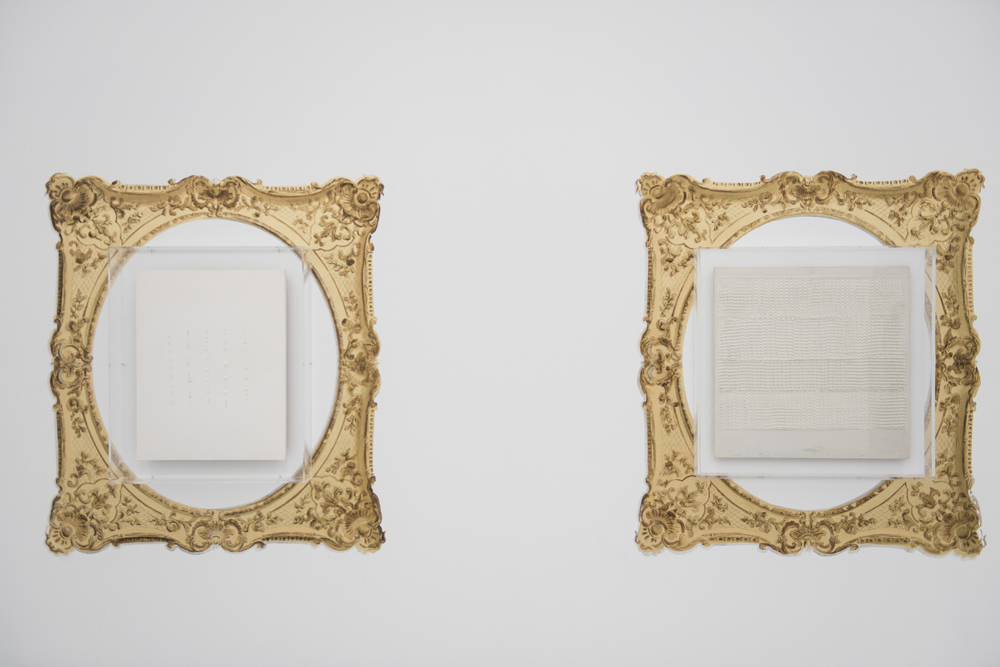Francesco Vezzoli
Museion Bozen/Bolzano, Italy
Museion Bozen/Bolzano, Italy

Museion inaugurates its 2016 programme with a two-part Francesco Vezzoli exhibition, ‘Museo / Museion’. On the first three floors of the museum, the artist has re-arranged the collection, while on the fourth, Letizia Ragaglia, the museum’s director, has curated the first retrospective of Vezzoli’s sculptural work. A classical aesthetic as well as contemporary iconsare the two predominant, intertwined themes in the artist’s recent work, but here the emphasis is more on antiquity than on contemporaneity. The show begins in the foyer, with wallpaper based on a Giovanni Paolo Panini painting, which transforms the space into an 18th-century salon. Upstairs, the artist has (literally and conceptually) reframed contemporary works from Museion’s collection and, in the upper gallery, the exhibition reaches its climax with a series of classical statues re-engineered by the artist. (For example, a 170 CE marble sculpture of a woman’s head is updated with a glossy painted finish.)
Exhibitions combining classical and contemporary artworks are having a moment in Italy: from ‘Serial Classic’ at Fondazione Prada, Milan, last summer, which displayed Roman antiquities in order to explore notions of the original and the imitation, to ‘Jeff Koons in Florence’ at the city’s Palazzo Vecchio, which juxtaposed two of Koons’s sculptures with works by Donatello and Michelangelo. But how much agency does art from the classical period really have in contemporary art? How much critical, or even political, potential can be leveraged? Vezzoli is almost religiously mute when it comes to these questions. During the press preview for ‘Museo / Museion’, he insisted on calling his curatorial approach ‘a non-antagonistic provocation’, ‘the opposite of institutional critique’. Instead, he is playing ‘a serious game’. Indeed, Vezzoli’s curated show is often jocular. Take Mario Schifano’s Casa sola (Home Alone, 1988/89), which is clumsily nestled in a trompe l’œil rendition of the thick wooden frame of Sandro Botticelli’s Annunciation (1489); or Nan Goldin’s Gina at Bruce’s Dinner Party, NYC (1991), which is framed by an exact replica of the frame that holds Caravaggio’s Saint Jerome Writing (c.1605–06).

Nonetheless, the playfulness does not quite hide the more thought-provoking issue: the role of an art institution. In conversation, Ragaglia admitted to being ‘obsessed with the question, “What is a museum?”’, emphasizing her determination to keep Museion’s collection ‘fluid’. Vezzoli gestures to the influence of 30 masterpieces but, in showing just their frames, he invites visitors to answer such questions as: Does Giovanni Bellini’s overwhelmingly dramatic Pietà (1455–60) cast a new (gloomy) light on Piotr Uklański’s Untitled (Black Moon) from 2003? Does Titian’s Pastoral Concert (1510–11) change the rhythmic character of Carla Accardi’s mandalas of black and white swirls (Labirinto, Labyrinth, 1957)?
It is in the survey of Vezzoli’s sculptural work on the fourth floor that the political implications become more apparent. Over the past five years, the artist has acquired several antique statues at auction. Some of these have been restored to their original state, while others have been paired with new creations, becoming a part of the artist’s work: a beautiful, 19th-century red porphyry head sits face-to-face with a white marble self-portrait by Vezzoli (Satire of a Satyr, 2011); 12 tiny archeological artefacts are topped with handmade cotton hats (Styling the Past, 2014); a torso of a 2nd-century CE marble statue stands with a Constantin Brâncuși bronze head in place of its natural crowning piece (Exotic& Erotic (after Constantin Brâncuși), 2015). But, rather than disintegrating the status quo, these sculptural and historical pastiches seem to signal a return to a‘status quo ante’.
The artist’s series ‘True Colors’ (2014)is a tangible demonstration of how Vezzoli’s journey into the foundations of classicism has turned from sacrilegious to rigorous. In consultation with art historians and archaeologists, he restored the painted faces of several marble busts dating to the 1st century CE, challenging the common perception of Greco-Roman statues as devoid of colour. During a TEDx Talk last year, Vezzoli said: ‘We have inherited a watered-down, cleaned-up version of the past […] When I approach an ancient sculpture and colour its skin or eyes, I restore its capability of being a vehicle of desire.’ In these times of feverish debate about what may or may not constitute the foundations of Europe’s common cultural heritage, to speak of historical truth and to question some of the lies on which we have based our understanding of the past is a well-timed endeavour and, in that sense, hasa clear political charge – whether Vezzoli likes to admit it or not.
























